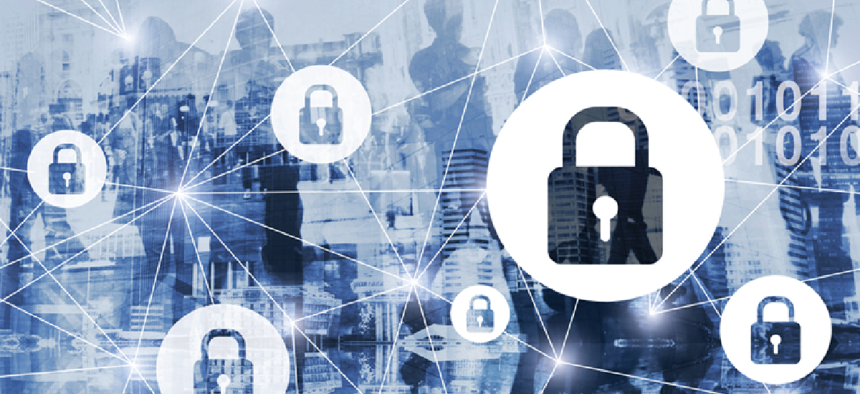Tackling privileged-access security


Connecting state and local government leaders
To prevent attackers from infiltrating government networks, agencies must secure privileged access, limiting intruders’ ability to move laterally and escalate privileges.
The Government Accountability Office recently released a scathing report highlighting the critical vulnerabilities that malicious attackers could exploit to take complete control of the Pentagon's advanced weapon systems. The findings are frightening and frustrating, but not necessarily surprising.
They’re a microcosm of a broader privileged-access security issue that the federal government must immediately address. The failure to secure privileged accounts, which have powerful access to an agency’s most sensitive assets, is at the heart of the most damaging security breaches. It’s absolutely critical that agencies and the organizations that they do business with lock down privileged credentials.
One of the most damning aspects of the report is the fact that auditors breached the weapon systems using "simple tools and techniques" and were able to "guess an administrator password in nine seconds," allowing them to gain administrative privileges for the systems controlling the weapons. In the hands of a malicious attacker, this level of control could be disastrous.
The most frustrating part is that the vulnerabilities exploited are nothing new. They’re known pathways for attackers and have long existed throughout federal IT infrastructure. The GAO has repeatedly called out poor privileged-access security as a critical vulnerability across countless agencies, but the problems still persist.
These new findings are a giant red flag and should serve as a warning for broader privileged-access security problems. Agencies and government contractors must think like an attacker and adopt an "assume-breach" mentality i to put proactive controls in place to protect their most sensitive credentials.
So where do they start? Here are three critical areas highlighted in the report.
Admit there’s a problem
The first step to better security is understanding -- and admitting -- there’s a problem. One of the sharpest critiques is that the Defense Department ignored warnings and test results.
In the last three years, the GAO has issued multiple reports that indicated an agency or system had pervasive problems with privileged-access security. The Office of Management and Budget issued its own report in April in partnership with the Department of Homeland Security, revealing that only 55 percent of agencies limit access based on user attributes and roles -- and only 57 percent review and track administrative privileges at all.
DOD, along with every other government agency and organization, must change its mindset when it comes to cybersecurity. Failing to address the privileged-access security problem is like hiding a house key under a mat and hoping burglars won’t think to look there. We simply cannot wait for a disaster to strike before addressing these security shortcomings.
Change default passwords
According to the GAO report, “multiple weapon systems used commercial or open source software, but did not change the default password when the software was installed, which allowed test teams to look up the password on the internet and gain administrator privileges for that software.”
Default passwords are the factory-set passwords for the administrative accounts of a system. They exist so that developers and administrators can easily set up a technology out of the box. They exist everywhere -- on home routers, networked printers and even advanced weapon systems.
As the GAO testers found out, default passwords are typically easy to find through a simple internet search, which means not changing them is a failure of basic security hygiene. Anyone with Google access can find these passwords – never mind potential nation-state attackers. Every default password should be identified and changed in accordance with strong password policy.
Secure "near-siders"
While the Pentagon was able to prevent exploitation of the weapon system from remote users, it struggled in stopping potential insiders and near-siders.
Threats come from everywhere, both inside and outside of the organization. The government’s issues with insider threats has been well documented, as have the outside attacks. But the "near-sider" is a growing concern for federal security. Near-siders are the contractors and third-parties who function as insiders -- with the same privileged access as people inside the organization.
Attackers seek out both insiders and near-siders to steal their access credentials and then escalate privileges until they’re able to take control of a system. As the report states, with this access, an attacker could “see, in real-time, what the operators were seeing on their screens and could manipulate the system.”
The bottom line: Practice good hygiene
It’s absolutely critical that agencies secure privileged access, limiting intruders’ ability to move laterally and escalate privileges. One compromised set of credentials is all an attacker needs to knock out weapons systems, shut down critical infrastructure or infiltrate data stores with sensitive information.
Establishing a strong security posture starts with ensuring good cyber hygiene, and securing these known and basic vulnerabilities is a must. The privileged-access problem is a clear and present threat, and the government simply can’t afford to wait for disaster to strike before addressing it.
NEXT STORY: Biometric ID spots imposters at land crossing




